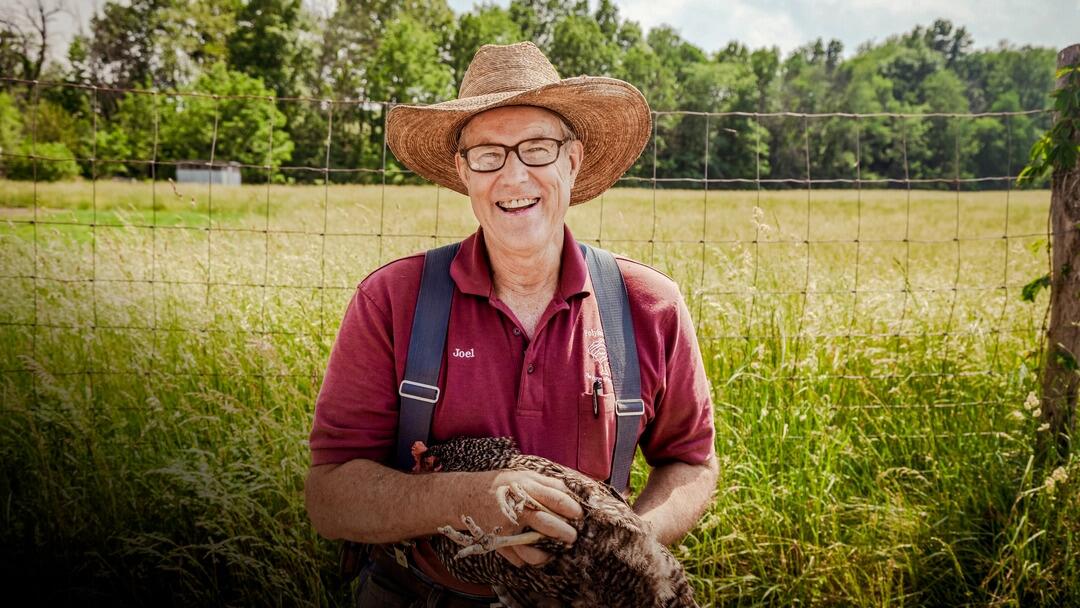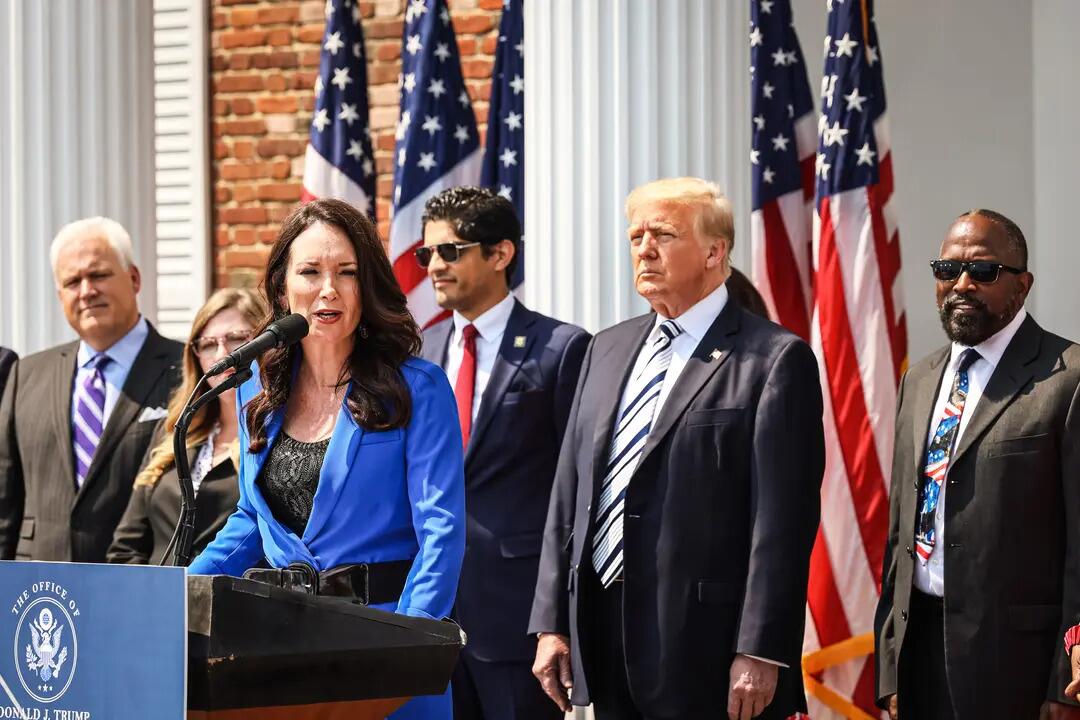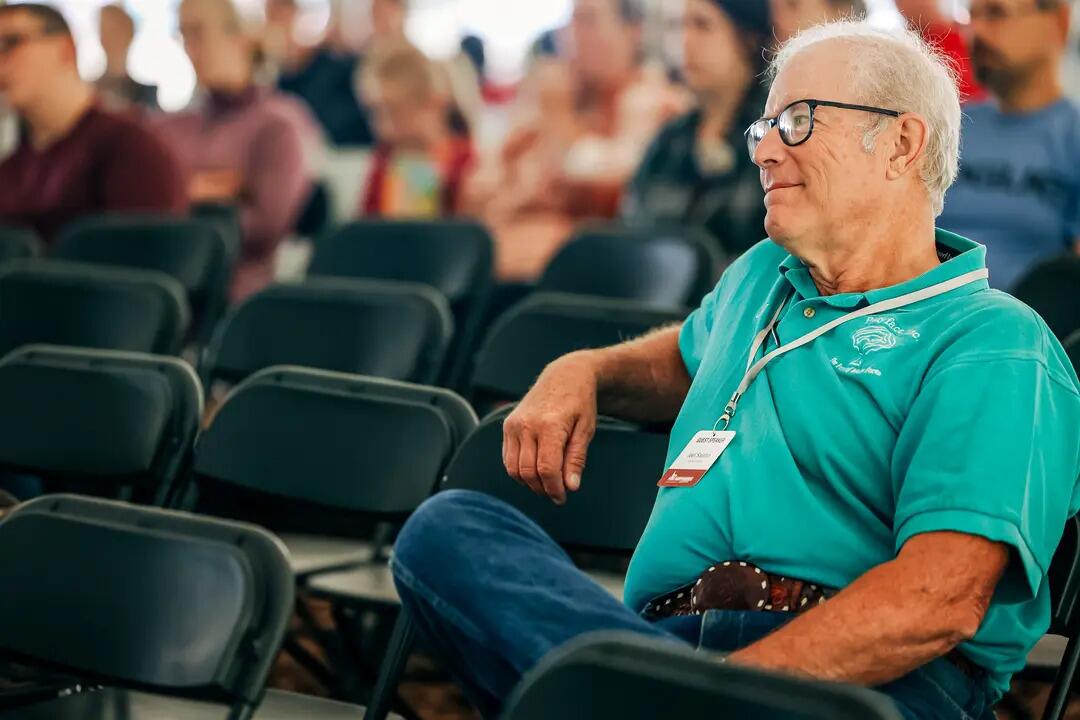(Détruire la puissance nutritive de la Terre pour la remplacer par du substitut chimique ou proche, c'est tout ce qu'ils ont à proposer. Arrêter de tuer volontairement les sols, ça, ça ne leur vient même pas à l'esprit tellement ils sont hors sol. Heureusement, il y a des personnes qui font différemment, il ne faut pas les laisser seul où ILS le détruiront. note de rené)
Meet Joel Salatin, A Leader In Regenerative Agriculture And Self-Described 'Lunatic Farmer'
Authored by Jeff Louderback via The Epoch Times (emphasis ours),
Joel Salatin, the self-described “Christian Libertarian environmentalist capitalist lunatic farmer,” enthusiastically engages in a free-flowing conversation as he navigates the bumpy mountain roads that wind through his 700-acre Polyface Farms in Virginia’s Shenandoah Valley.

He showcases his whimsical sense of humor while driving a faded early-1980s Ford Bronco that has no windows and only gets washed by the rain.
“Most self-respecting farmers are supposed to have a side-by-side ATV, but I’m not a self-respecting farmer,” Salatin said. “I’ve got this old $2,000 Bronco. And it gets the job done.”
Regarded by many as the nation’s foremost authority on regenerative farming, Salatin is the author of more than a dozen books on the topic and travels around the world speaking at conferences and serving as a generously paid consultant.
An advocate for local food networks, independent farmers, and what he calls “personal choice in food sourcing,” he is outspoken about what he believes is “extreme government overreach” in agriculture.
After former President Donald Trump won a return to the White House in November, Salatin announced on his blog that the president-elect’s transition team contacted him to serve as a U.S. Department of Agriculture adviser and that U.S. Rep. Thomas Massie (R-Ky.) would serve as secretary of agriculture.
Instead, Trump nominated Brooke Rollins to head the Department of Agriculture.
Still, the 64-year-old Salatin said he is hopeful that the incoming Trump administration—which may include a Department of Health and Human Services led by Robert F. Kennedy Jr.—will remove government regulations that “are detrimental to farmers, and subsequently detrimental to consumers.”
“A key to improving the quality of our food is to lessen regulations so people could get locally sourced food and not have to get food shipped from across the country,” Salatin said.
Cumbersome Regulations
He noted that there are thousands of farm entrepreneurs ready to launch their clean food alternatives but that they can’t get to the marketplace because of these food regulations.
“Four companies control 85 percent of what we eat in America,“ he said. “What we need is freedom of choice with our food.”

Salatin said that if Rollins is confirmed as secretary of the Department of Agriculture, he would like to see her swiftly enact a “Food Emancipation Proclamation” that would “allow direct farmer-to-consumer” transactions without cumbersome regulations.
“If you want to come to my farm and get sausage, I should be able to sell it to you without a bureaucrat being involved,” he said.
“If someone wants to do that now, I first have to take the pigs to a federally inspected processing facility, which has to pass through a whole bunch of licensing hoops to keep their license, and I have to pay them to do that.”
If it were legal, Salatin said, Polyface Farms would be a turnkey operation.
Instead, regulations require otherwise.
“We have to take that pig up the interstate to a slaughterhouse, and we pay a lot of money to bring it back,” he said. “We lose all of our guts, you know, the stuff that we could compost and use for fertilizer, and the income we could get by doing it ourselves.”
Salatin laments the plight of the modern independent farmer.
“Out of every dollar that’s spent at the grocery store, the farmer gets 9 cents of it on average,” he said.
“For beef, it’s higher. For wheat, it’s lower, but on average it’s 9 cents. So that means 91 of those cents are spent dealing with middlemen, transportation, processing, packaging, marketing, and distribution.”
It would be a “boon” to small farmers if government regulations were “significantly reduced,” Salatin said.
“Suddenly, a small farmer can make a better living and it would also be a wonderful multiple-choice option for consumers to be able to have a greater variety of quality food options at a more affordable price,” he said.
Advocates of expanded government oversight are saying “they trust government more than they trust small businesses and small farms,” and that “needs to change,” Salatin said.
“Raw milk is a perfect example,” he said. “The government demonizes raw milk as being unsafe. We subsidize $9 billion a year to Coca-Cola under a nutrition program, and we criminalize raw milk.
“I would suggest that Coca-Cola is far more dangerous than raw milk. I’m not suggesting that nobody’s ever gotten sick from raw milk. Has anybody ever gotten sick from Coca-Cola? Yeah, lots of people with all these obesity rates that are caused by consuming large amounts of sugar.”

Regenerative Methods
EarthDay.org reports that the United States is losing soil 10 times faster than it is being replenished.
Large-scale farms produce most of the food and agricultural pollution, the site says, and those facilities are operated by industrial or foreign companies that “value short-term profits over the long-term health of our land and people.”
Regenerative farming “promotes the health of degraded soils by restoring their organic carbon” through practices such as no-till farming and cover cropping that reduce erosion and water pollution and cultivate healthier soil, according to the site.
Salatin agreed and offered a simpler definition of regenerative farming.
“It’s all about leaving the land better off than when you found it,” he said.
“America is sick. More people are questioning the standard American diet. Food and farming go together. You can’t divorce food from farming.
“You must first have nutrient-dense farms to get nutrient-dense food.”
Salatin learned regenerative farming methods from his father, who bought the property where Polyface Farms sits in 1961.
The land was not fertile, eroded after decades of over-tilling and neglect.
Salatin’s father turned away from conventional farming and embraced regenerative methods such as planting trees, digging ponds, creating tall compost piles, and implementing rotational grazing.
The land is now lush and rich in nutrients.
Today, Polyface Farms provides beef, pork, poultry, and forestry products for more than 5,000 families, 50 restaurants, 10 retail outlets, and a farmer’s market.

Four generations of Salatin’s family live and work on the farm.
For centuries, Americans lived on locally sourced foods grown on farms free of chemicals. A change started when chemical fertilizers became widespread, which has led to depleted soil and unhealthy foods, Salatin said.
Even in the 1940s, some people cautioned that using “chemical manure” would result in the loss of soil fertility, according to Salatin.
“The quickest way to destroy the land is to de-vegetate it, and plowing is No. 1,” he said.
Read the rest here...
Aucun commentaire:
Enregistrer un commentaire